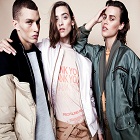FW
According to the latest Cotton Corporation (CCI) of India statistics, after a steady rise over the years, cotton cultivation in the country has declined by 8 per cent this year. The national cotton acreage has come down from 128 lakh hectare to 118 lakh hectare from 2014-15 to 2015-16.
The CCI had earlier predicted higher cotton acreage for 2015-16. Now, the total cotton output of India is also expected to be a dismal 352 lakh bales, compared to the 380 lakh bales a year ago. A large number of cotton growing farmers are supposed to have switched to food crops such as soybean for better returns this time.
Farmers prefer cotton as it requires lesser water. Recession in the global market last year, however, has led to a crash in cotton prices, which has alerted the growers now. In addition, poor yield, high cultivation cost and decreasing resistance of BT cotton have made it less lucrative over the years, according to activists.
Barring Punjab, Gujarat and MP, all cotton growing states have witnessed a huge drop in acreage this year. Tamil Nadu topped the chart with one-third of the cotton land going to other crops. Maharashtra – the second largest cotton growing state in the country after Gujarat – has witnessed a 9 per cent decline (from 42 lakh hectare to 38 lakh hectare) in cotton sowing. A campaign of ‘withdraw cotton’ has also been launched in the state last year, which seems to have started showing its results.
Bangladesh’s State Minister for Textiles and Jute Mirza Azam recently invited textile sector businessmen to come to his ministry to resolve problems if any. Textile manufacturers and exporters do not come to his ministry, he said.
As some of textile manufacturers demanded not to increase the gas price again otherwise the sector will hit very hard and cannot cope with anymore, Azam urged textile makers to come with written demand for halting the move to hike gas prices further and said he would pursue it to the government's high up for solution.
Azam was speaking as the chief guest at a networking dinner organised by India International Textile Machinery Exhibition 2016 (ITME 2016) at a city hotel. Chaired by India ITME 2016 Chairman Sanjiv Lathia, the programme was also addressed by Senior Vice President of Bangladesh Garment Manufacturers and Exporters Association (BGMEA) Faruque Hassan, Vice President of Bangladesh Textile Mills Association (BTMA) Fazlul Haque, Deputy High Commissioner of Indian High Commission in Dhaka Adarsh Swaika, Vice Chancellor of Bangladesh University of Textile Masud Ahmed.
Meanwhile, Mirza Azam urged textile manufacturers and exporters to participate in the fair to be held in Mumbai. The 10th edition of India International Textile Machinery Exhibition 2016, the largest textile machinery and accessory exhibition in India, will be held from December 3 to December 8, 2016 at Bombay Exhibition Centre, Mumbai.
Prices of cotton yarn have increased by around 25 per cent in Pakistan during the last one-and-a-half months.
The country’s garment manufacturers and exporters say this is due to cartelization by local manufacturers who are taking advantage of the 10 per cent additional regulatory duty on the import of yarn.
Garment makers want the additional regulatory duty on imports of cotton yarn to be abolished. They also want a ban on the exports of raw cotton and cotton yarn for a short period till the arrival of new crop rationalizes the rates of yarn in the local market. They say the whole value-added apparel sector has been hit hard, especially due to limited availability of cotton which is being exported without any hindrance.
Textile exports of Pakistan have a more than 54 per cent share in total exports of the country. But the apparel sector already has a very limited production line owing to the lack of the latest fabric varieties. This has resulted in a significant decline in apparel exports. The export target of 25 billion dollars could not be achieved in the last fiscal year. Enhancing textile exports can help the country reduce the trade deficit.
Blackstone, the private equity giant has sold another large chunk of shares in garment exporter Gokaldas Exports as it looks to gradually liquidate one of its loss-making investments in India.
It sold 7.4 per cent stake in the company for Rs 29.2 crore ($4.4 million) recently. The P.E firm sold shares at Rs 113.5 each or less than half the price at which it had invested in the firm.
According to the exchange data, ICICI Bank bought the shares. This is the second large chunk of shares of Gokaldas Exports that Blackstone has offloaded in the past few weeks. Last month, Blackstone had sold just under 10 per cent stake in the firm for Rs 43.5 crore ($6.5 million). That time too ICICI Bank had picked the shares.
Separate disclosures suggest ICICI Bank has been slowly selling the shares previously purchased from Blackstone at a loss. With the latest share sale, Blackstone's holding in the company has fallen to 40 per cent. This is currently worth Rs 154 crore.
Meanwhile, Gokaldas Exports' scrip declined 2.12 per cent to close the day at Rs 110.95 a share on the BSE in a strong Mumbai market.
Garment exports from Bangladesh to China and Japan soared in the last fiscal (2015-16). This was the strongest sign yet of the growing stature of the country’s apparel sector in global trade.
Last fiscal, garment exports to Japan stood at $774.47 million, up 18.68 per cent year-on-year, according to a data of the Export Promotion Bureau.
Some $341.22 million of garment items were shipped to China in 2015-16 (an increase of 11.9 per cent from a year earlier). The reason for the uptick is the recent relaxation of the rules of origin (Roo) by the governments of the two countries.
The Roos are the criteria used to determine the national source of a product and they vary from country-to- country. Their importance is derived from the fact that duties and restrictions in several cases depend on the source of import.
For instance, Bangladesh has duty-free access for its garment products even for items made from imported fabrics to the Japanese market.
For many years now, Bangladesh has been enjoying duty benefits on its woven garment exports to Japan and from April last year its knitwear shipments were given the same privilege.
When the then Andhra Pradesh government proposed an Integrated Apparel and Textile Park way back in 2004, the locals who were tired of dreaming the revival of Azam Jahi Mills, the only industry in Warangal thought that it was a god send opportunity for them.
Now, twelve years hence, the dream of the apparel park looks like coming to reality. Post bifurcation of the State, it appears that all is not lost with the new government coming up with an ambitious plan to establish a textile park and a garment cluster to generate employment opportunities to the locals.
The move is also expected to bring back those working with the textile and garment industry in places like Surat, Bhiwandi, Solapur and other places in pursuit of their livelihood. Telangana State Industrial Infrastructure Corporation (TSIIC) Zonal Manager Raman Rathod commented that the authority that acquired the land on the suburbs of tri-cities near Madikonda for the purpose has handed over 60 acres to the 360-member Kakatiya Textile & Weavers Welfare Podupu & Parapati Paraspara Sahayaka Sahakara Sangham. This apart, another 45 acres have been earmarked for the proposed Garment Cluster.
Sangham president Darga Swamy observed that there was a huge scope for the growth of textile and garment industry as the district was endowed with all the resources. This apart, cotton is cultivated in nearly 2.47 lakh hectares of land in the district.
It’s learnt that TSIIC has another 50-odd acre of land at its disposal in case the government wants to develop a full-fledged Apparel Park.
In a bid to provide employment to the locals, the then Telugu Desam government had planned to establish Apparel and Textile Park on the premises of Azam Jahi Mills’ land through a special purpose vehicle (SPV) with the assistance from the Centre.
With an eye on promoting exports and design research on par with the growing market needs, the aim of the project was to incorporate state-of-the-art power looms and other facilities for the handloom and garment clusters.
Since the laying of the foundation stone for the apparel park on February 19, 2004, neither the TDP government nor the Congress which won back-to-back elections in 2004 and 2009 in the State apparently make any effort to take the project forward.
When The Hans India sought to know about the status of the Apparel Park, Handlooms and Textile Department Assistant Director M Raghunandan Reddy had replied saying that the government has not taken any decision on the Apparel Park and the land admeasuring about 27 acres in the Azam Jahi Mills earmarked for the purpose was still in their possession.
American clothing retailers are going through bad times as a number of Department stores such as Macy’s continue to struggle. So much so that specialty apparel stores like J.Crew and Gap are in a scornful mood. All this because shoppers are seen getting close to off-price stores selling goods that are permanently on sale.
A recent (July 14) report by research firm NPD Group found that 75% of US apparel purchases across all retail channels come from shoppers who also shop for clothing at off-price stores such as Marshalls, TJ Maxx and Ross.
Looking at it in another way, if 100 people walk into a Macy’s, 75 of them are also off-price clothing shoppers. That means Macy’s and other US clothing retailers are vying directly for most of their customers with competitors who only sell at a discount.
The NPD report also found that visits to off-price retailers increased 4% in the year through April 2016 compared to the same period last year. During that time, half of those visits led to a purchase.
Many department stores have created their own discount channels to capture these customers though results have been all that satisfactory. While Nordstrom’s offshoot, Nordstrom Rack has performed well, Saks Fifth Avenue’s and Bloomingdale’s outlets have had to go through harder times.
This increase of off-price retailers as well as fast fashion is also the reason of downward pricing pressure that’s making clothes on the low end of retail ever cheaper.
While the data on visits comes from NPD’s Shopper Insights Service, most of NPD’s data comes from its Checkout Tracking Service.
Other Checkout Tracking data not included in the report shows that US consumers of all sorts including buyers of high-end luxury goods are selective on prices and are willing to visit different types of stores in search of deals.
Origin Africa will be held in Madagascar, November 3 to 5, 2016.
This is Africa’s premier trade show. It highlights the creativity and innovation of the African cotton, textile, clothing industries, home décor, machinery and technology, with a specific focus on business, trade and investment both regionally and internationally while capturing the spirit, style and innovation of modern Africa.
There will be seminars and informative discussions on a wide range of current topics. The show will be attended by sourcing professionals and buyers from SADC, Europe, US and other important markets. There will be African and international exhibitors. The 2015 event had over 180 exhibitors from 25 countries.
Encouraging investment conditions are making Africa the next major sourcing destination.
Origin Africa is an ongoing effort dedicated to improving the African cotton, textile and apparel trade. It involves collaboration with producers across the cotton value chain from farm to fashion including accessories suppliers, home textile and décor to develop, guide and promote African trade.
The event is organized by the Africa Cotton and Textile Industries Federation with the Madagascar Export Processing Zone Association. Visitors will be given an opportunity to understand the benefits of preferential trade agreements and the development of regional trading blocs.

With an aim to promote bilateral trade and industrial cooperation in the textile and fashion sectors between Iran and India, the Apparel Export Promotion Council (AEPC), India’s largest export promotion council, signed a memorandum of understanding (MoU) with the Tehran Garment Union (TGU) recently.
The MoU was signed at the 57th edition of India International Garment Fair (IIGF) 2016, which was held from July 18-20in New Delhi. It was signed by Ashok G Rajani, Chairman, AEPC and Mohamad Javad Sedghamiz, Vice President, TGU on behalf of Indian and Iranian bodies respectively.
Rajani remarked that AEPC and TGU would make efforts to promote bilater al trade and industrial cooperation in the textile and fashion sectors, include sharing experiences and knowledge, cooperate to provide relevant information in the promotion of bilateral trade and industrial cooperation, identify Indian and Iranian partners in order to boost import and export businesses and facilitate and support trade relations between AEPC and TGU.
Iran has already agreed to reduce the tariffs on Indian products by 20-25 per cent. With the MOU in place, India would become the largest textile exporter to Iran.
The MoU will remain in effect till July 18, 2017. India’s share in Iran’s readymade garment import has just the right possibility to capture the growing Iranian market.
"The demand for clothing that is neither traditionally male nor female is on the rise. As more and more people opt to make their diverse sexual and gender identities public and as choice-craving individuals seek clothing that perfectly reflects their personal style, retail and fashion insiders expect sales of androgynous duds to climb in the years ahead. Retail landscape witness the recent spate of closures among mid-range clothiers, offering unisex clothing represents a lucrative niche opportunity."

The demand for clothing that is neither traditionally male nor female is on the rise. As more and more people opt to make their diverse sexual and gender identities public and as choice-craving individuals seek clothing that perfectly reflects their personal style, retail and fashion insiders expect sales of androgynous duds to climb in the years ahead. Retail landscape witness the recent spate of closures among mid-range clothiers, offering unisex clothing represents a lucrative niche opportunity.

The history of gender-bending fashion is as long as it is fascinating: Men and women were borrowing from one another’s closets centuries before iconic celebrities like David Bowie, Prince and Annie Lennox made androgyny cool. And contemporary brands like Club Monaco and the Gap were founded on the ethos that anyone can wear their casual basics.
Today’s fashion choices are about more than looking chic. Such high-profile figures as Caitlyn Jenner and Laverne Cox have put human faces on the struggles of transgender people. Around the world, battles are being waged around the right to do mundane things - such as using the washroom, getting workplace benefits and, yes, dressing in accordance with one’s deepest inner identity, freely and without prejudice. Social media is amplifying these concerns and, as is so often the case, the political battleground is informing fashion. In particular, millennials - gay, straight and trans - see no stigma and plenty of style in gender-neutral apparel.
Sale of gender neutral clothes on the rise
It’s a ripe opportunity for retailers and manufacturers who supply gender neutral clothes, believes Sandy Silva, a Toronto-based fashion analyst for market intelligence firm NPD Group, which produced a study on gender-neutral clothing last year. Retail as a whole needs to constantly evolve and inject newness for the consumer, she says, and most retailers could inject unisex wear without much effort - especially if they already cater to men and women. She identifies bright prospects for retailers to offer not only gender-neutral shirts, pants and skirts but also accessories such as footwear, watches and even underwear.
Meanwhile, Zara recently introduced a line of unisex clothing for adults, while GapKids did the same for children’s wear. Toronto’s Muttonhead Apparel, whose utilitarian casuals are designed to fit both men’s and women’s bodies, has gained a cult following. Haute fashion houses like Hood by Air, J.W.Anderson and Gucci have all released unisex lines.
Says Ben Barry, an associate professor specialising in fashion diversity at the Ryerson School of Fashion, what turns heads on Paris runways may soon become the norm. Barry recently studied the style of hundreds of men and found a preponderance of clothes with feminine attributes, especially in the closets of millennials. Young people, according to him, want to play and cross boundaries, regardless of their sexual and gender identities.
Fashion is by nature fickle, but both Barry and Moffat are confident that unisex garb is no fad. As Moffat says, this is about people finally feeling they can be who they are and dress how they want.













